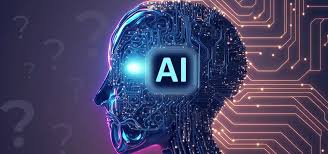artificial intelligence (umela inteligence) (AI) is changing the way we live and work as well as how we engage with technologies. In everything from self-driving assistants and virtual assistants vehicles, AI is becoming increasingly integrated into our daily life. What exactly is AI, as well as why it is so important? This article will provide a brief overview of the basics of artificial intelligence to aid you in understanding its fundamental concepts and implications.
What is AI?
At its core, AI refers to the imitation of human intelligence by machines that are designed to learn and think like humans. It can include a variety of abilities, such as solving problems, pattern recognition and the ability to make decisions. AI Systems can be divided into two broad categories: general AI and narrow AI as well as general AI.
Neasier AI: Also referred to by the name weak AI. It is a type of system is designed to perform a specific task or solve a particular issue. Some examples include: voice assistants like Siri and Alexa as well as recommendation algorithms employed by streaming services, as well as image recognition software. Narrow AI is prevalent and highly specialized but lacks the capacity to expand information beyond its intended functions.
General AI: Also known as the strongest AI also known as AGI (Artificial General Intelligence) This form of AI aims to replicate human cognitive abilities in a comprehensive manner. General AI will be competent at understanding learning and applying its intelligence to a wide range of scenarios and tasks. At present, AGI remains largely theoretical and is not yet realized.
How Does AI Work?
AI systems work by using algorithmic processes and information. An algorithm is a set of guidelines or rules provided to computers to aid it in learning on its own. Machine learning (ML), one of the subsets of AI is the process of training these algorithms on large datasets to detect patterns and make predictions. There are a variety of types of machine-learning, such as supervised learning, unsupervised learning, and reinforcement learning.
Supervised Learning The algorithm is trained on labeled data, where both the output and input are both known. As an example, a machine may learn to recognize cat images in photos after being trained using a set of cat pictures with labels that identify them as such.
Unsupervised Learning This algorithm is given unlabeled data and must find patterns and relationships in the data by itself. This method is commonly employed for clustering and other task of association.
Reinforcement Learning: The algorithm learns by interfacing with its surroundings and gaining rewards or penalties depending on its actions. This technique is widely employed in game play and robotics.
Ethical Considerations and Future Trends
As AI advances the ethical implications become more important. Concerns like privacy of data algorithms, bias in algorithmic computation, and the possibility of the displacement of jobs must be taken care of. In the future, AI promises more innovations, with advancements in areas like natural language processing, robotics and autonomous systems.
Understanding the basics of AI provides a foundation for understanding its effects on our world. As technology develops, being updated on the capabilities of AI and its the challenges it faces will be vital to making informed decisions and fostering responsible growth.
